Dropper posts have become integral to modern mountain bikes, and are quickly gaining popularity in the gravel sector. When Matej Mohorič secured victory in the 2022 Milan-San Remo with a dropper post, he ushered in a new era in the road bike world. Is the dropper post bound to become every roadie’s new secret weapon, or is it doomed to failure? We’ve thought, tinkered, and tested to find out.

“I’ve destroyed cycling again”. That’s how Matej Mohorič, still high on the fumes of victory, described the last kilometres of a memorable 2022 Milan-San Remo. On the Poggio descent, just a few kilometres before the finish line, the Slovenian rider attacked hard, gaining a massive 10-second lead over the chase group on a twisty 3 km road stretch. Ten seconds that brought Mohorič his victory and also opened a new debate in road cycling.
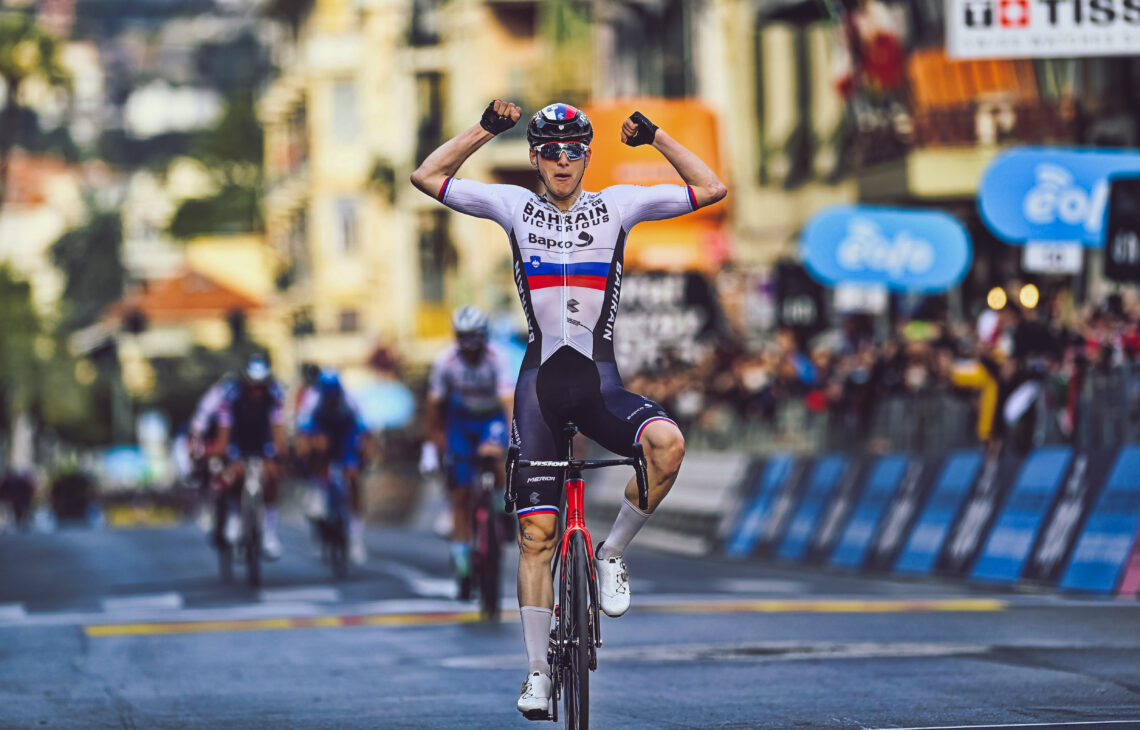
Is the dropper post the next revolution in road cycling?
In the finish area, people weren’t talking so much about Mohoričs downhill skills, but rather about his bike, which, at first glance, looks rather unspectacular. For this race, Mohorič had chosen to ride the MERIDA SCULTURA, which looks far more discreet than the Taiwanese manufacturer’s aero-bullet, the MERIDA REACTO. For comparison’s sake, the REACTO features an aero teardrop-shaped seat tube, while the SCULTURA relies on a classic, round seat tube, which allows Mohorič’s mechanics to install a FOX Transfer SL dropper post.
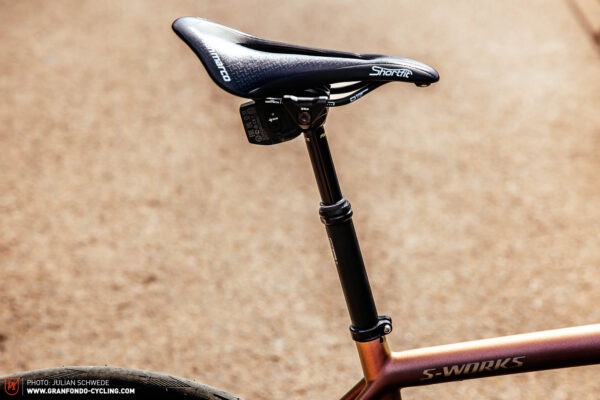
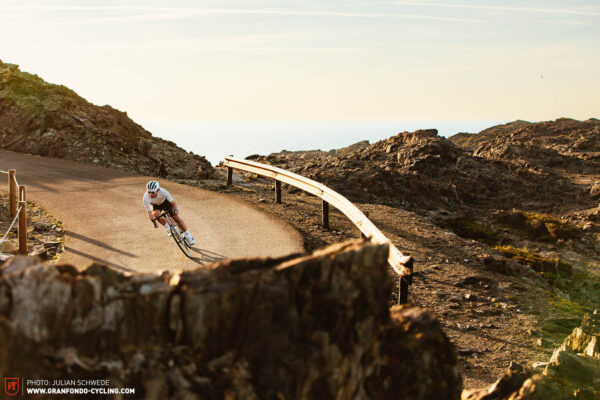
Come on, let’s drop it!
Mohorič is no stranger to radical downhill solutions. He pioneered the supertuck position, now banned by the UCI, in which riders drop their pelvis onto the top tube to improve aerodynamics, reducing drag by up to 135 watts. With the dropper post, he’s dropped another major bomb. “I think that everyone will start using dropper posts now” claimed the San Remo winner. Are we witnessing the next big race-bike revolution after disc brakes and aero integration?
No, Mohorič didn’t invent dropper posts. They’ve long been integral to modern mountain bikes, enabling a lower centre of gravity and thus ensuring more freedom of movement on the bike, which inspires huge amounts of confidence on technical and steep descents. The technology has also found its way onto more trail-oriented gravel bikes. In the MTB sector, dropper posts are operated via a remote on the handlebars. With 1x drivetrains, the remote can be attached to the brake lever, but how can you run this setup with 2x drivetrains?

Dropper posts on road bikes: not a great look, but does it make you faster?
In Mohorič’s case, the team mechanics installed a rotary switch on the handlebars and routed the remote cable through the frame. This allowed Mohorič to drop his saddle by around 60 mm and shift his weight better in fast, tight corners. Furthermore, the dropper post must have some aerodynamic advantages too. While the advantages might not be as blatant as with the Supertuck position, dropping the seating position by 60 mm should bring some massive perks at high speeds.
Are road bike dropper posts the next big thing?
At 337 g without the remote, the Fox Transfer SL is obviously heavier than a rigid carbon seatpost. For a World Tour team bike, which is required to weigh at least 6.8 kg, it isn’t exactly a deal-breaker. Some mechanics even glue lead strips into the frame to reach the minimum permissible weight. However, the exciting question is how the bike descends with the dropped seatpost, and whether the theoretical advantages can be converted into KOM-worthy time savings – even without the skills of a World Tour pro. Before assessing our descending skills, we had to test our mechanic skills. For this test we chose a 676 g RockShox Reverb AXS XPLR dropper post, which weighs more than Mohorič’s dropper because of the battery, but saves you the painful cable routing and in theory integrates easily with the SRAM AXS drivetrain.
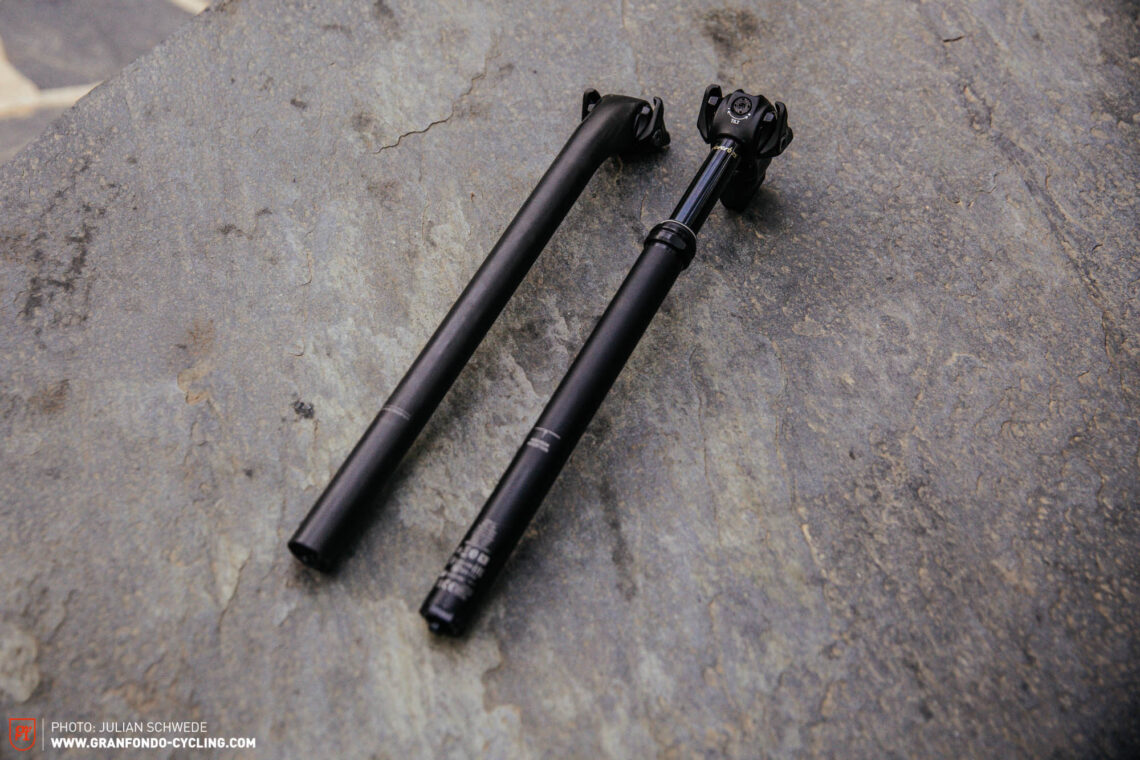
RockShox Reverb AXS XPLR-Dropper-Post: testing the road bike setup ourselves.
To carry out our dropper test we picked a Specialized Aethos with the latest SRAM Force AXS groupset. The round seat tube makes it easy to swap the stock seatpost with a wireless RockShox Reverb AXS XPLR dropper – so far so good! However, this is where things start to get a little more complicated, mainly due to SRAM wireless blips. These are the American manufacturer’s latest generation of satellite shifters, which can be freely positioned on the handlebars and transmit the shifting input to the AXS shifters and from there to the rear derailleur. Moreover, the function of the blips can be freely assigned, meaning that you could also use them to operate the AXS dropper post. Now guess what’s coming: SRAM don’t officially support this setup.
For sake of illustration, dropping the seatpost requires you to keep the button pressed for quite a while. However, the blips only send one short signal to the receiver, even when pressed continuously. This is enough to initiate gear shifts, but not enough to fully drop the seatpost. This is annoying because the combination of wireless blips with the new AXS groupsets is pretty awesome, both in terms of ergonomics and aesthetics.
However, the official gateway to limitless dropper post happiness isn’t as straightforward. A separate AXS ecosystem must be set up, with a multi-click switch wired up to a BlipBox which then communicates with the seatpost. This works independently of the groupset and reliably activates the dropper post.
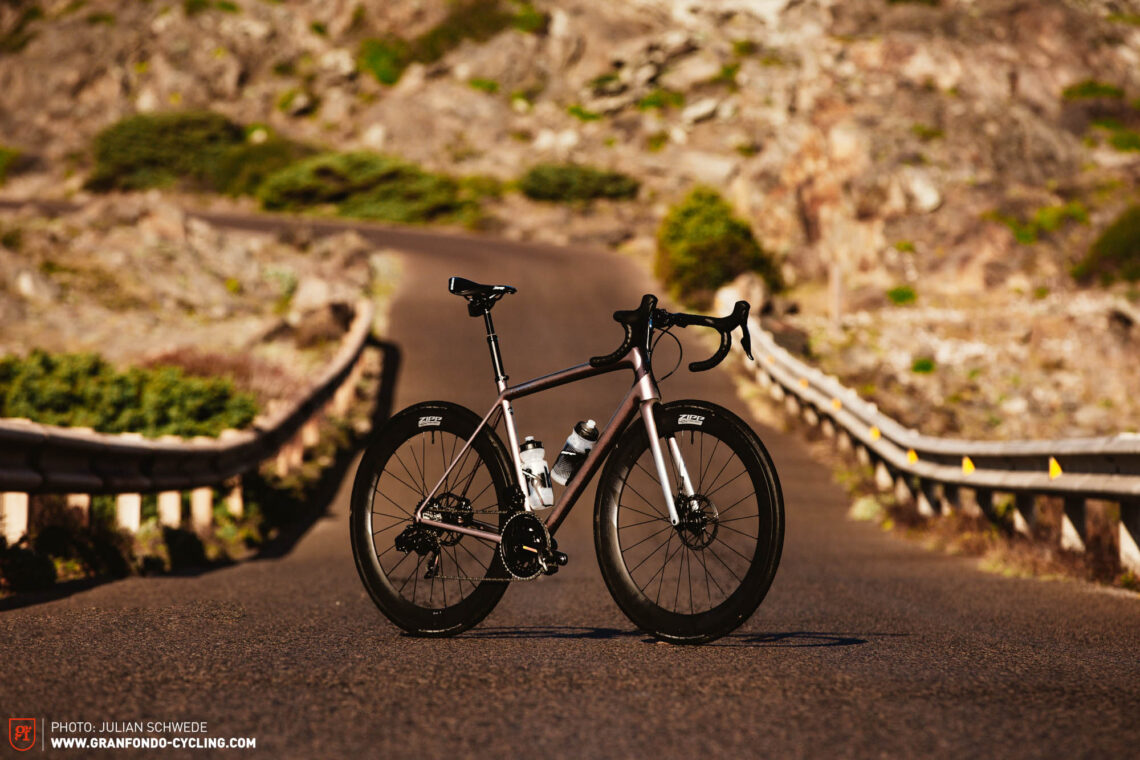
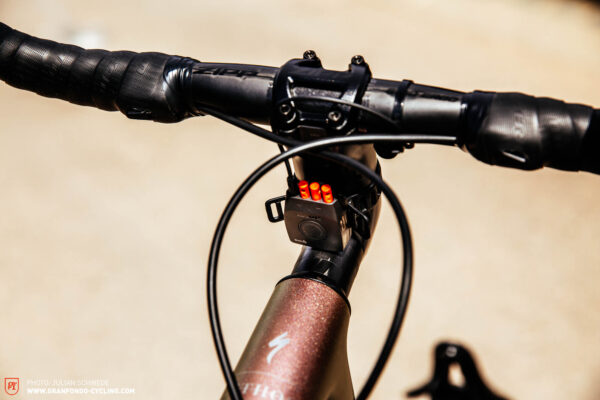
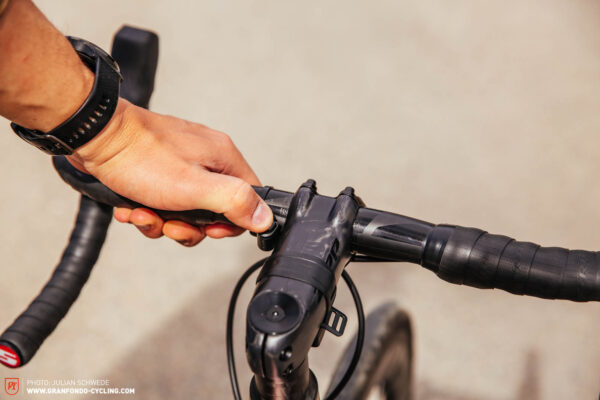
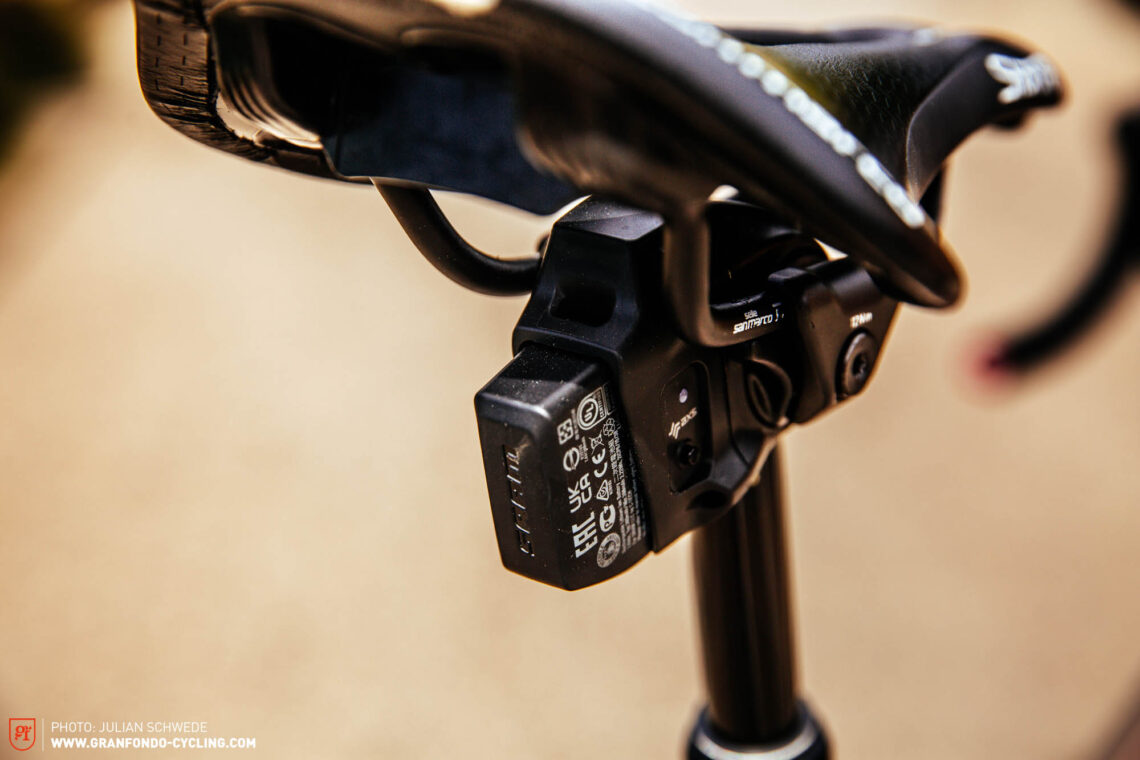
Roadie minimalists with a penchant for clean looks and internal cable routing won’t like this solution, because the BlipBox under the stem and the MultiClic connector make for a rather strong DIY look. The setup also has its flaws when it comes to ergonomics. In our test, the switch could only be installed on the tops of the handlebars, not in the drops. However, the latter is the best position for descending, which is also where it makes most sense to drop the saddle.
With his bike, Mohorič relied on a cable-operated dropper post instead of a wireless model. With this setup, the challenge is to route the additional cable through the frame – particularly challenging if you also have mechanical shifting. And while it’s great to have the choice of two different systems, in conjunction with a 2x SRAM AXS groupset, a wireless dropper with blips is the most sensible option, both visually and ergonomically. There’s still hope for all dropper-post fans: firmware updates. SRAM’s AXS technology and wireless platform has everything it takes to integrate a wireless dropper seamlessly into its own component ecosystem. Why SRAM haven’t yet thought of a better solution is a mystery to us.

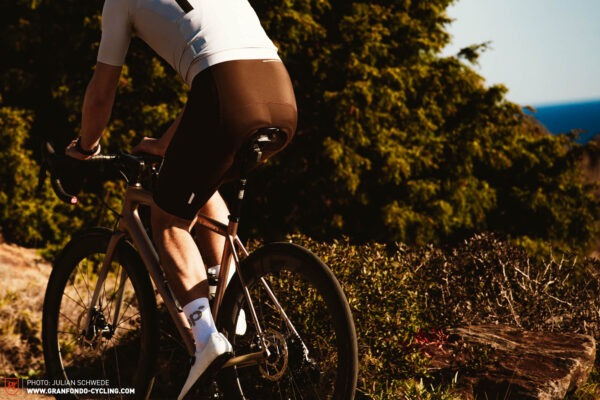
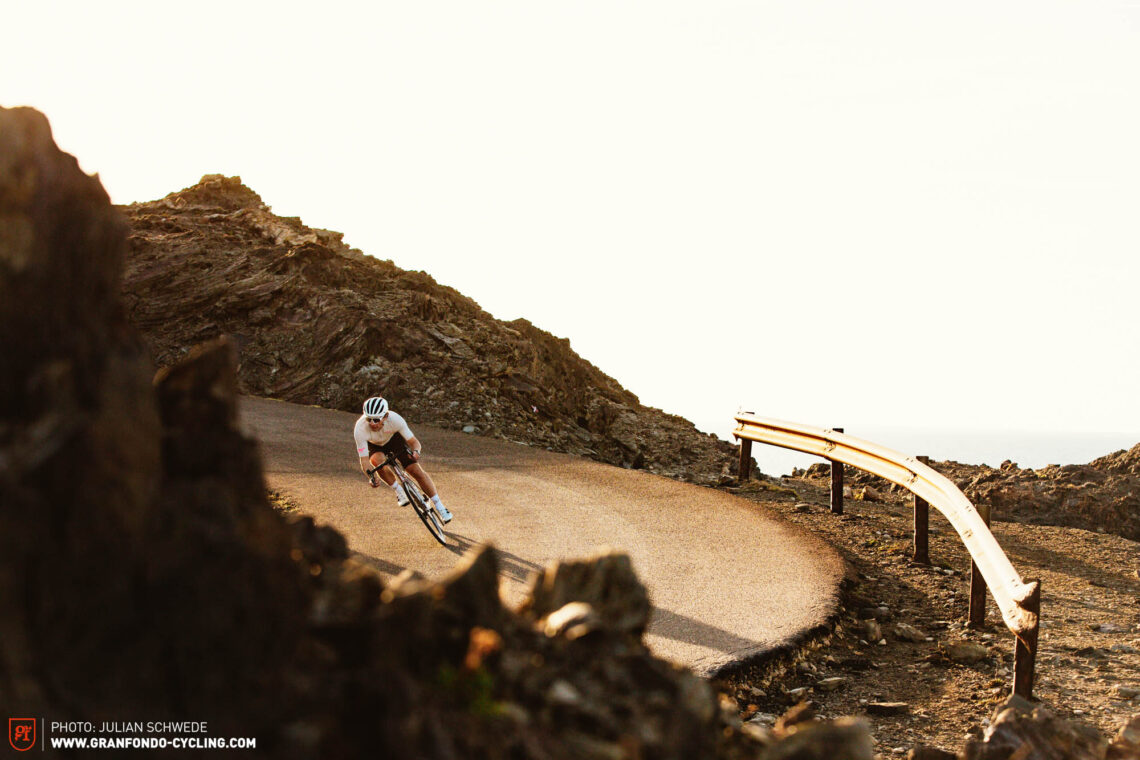

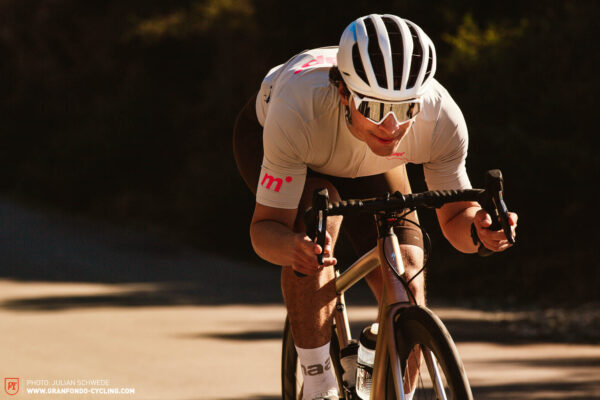
The RockShox Reverb AXS XPLR dropper post: how does it fare?
But enough theory, let’s attack the first descents! At the push of a button, the seat drops and we start leaning into the first switchback sequence. Straight away, we noticed more freedom of movement on the bike, which allows you to playfully shift your weight in fast consecutive corners, ensuring lively and nimble handling in the process. In long, wide corners, on the other hand, the dropper post doesn’t make much of a difference. In both scenarios, it changes the riding behaviour of the bike, making it more demanding to ride. The lack of contact with the saddle makes it harder to guess the position of the bike and the nature of the corner, which can be rather nerve-wracking at first.
Needless to say, we’re interested not only in the handling of the bike but also in the aerodynamic advantage of dropper posts on fast descents. The lower saddle really makes a difference, making you faster by a few km/h on extreme descents – provided you don’t have to pedal. So, yes, it makes you faster, but only in very few situations.
Dropper posts on road bikes – Open-mindedness required
Product managers and designers must have burst into tears at the sight of the 2022 Milan-San Remo winner’s bike. Aesthetics are heavily linked with aerodynamic optimisation in the race bike sector. New products and concepts are only acknowledged when backed by tangible performance improvements, new seatpost clamps are only interesting when integrated even more seamlessly into the bike and an innovative tire profile is taken seriously only when tested in the wind tunnel. Dropper posts are the antithesis of aero aesthetics. And while they might well make your bike faster, they’ll never make it look better. Mohorič is the first rider to win a World Tour race with a dropper, and he will remain the last to do so, at least for the foreseeable future. In the end, it’s neither the handling perks nor the aero advantages that will seal the fate of the dropper post on road bikes. Rather, its natural habitat, the round seat tube with a uniform diameter, is close to extinction.
Adjusting the saddle height is the most basic form of bike fitting. Doing this by pressing a remote on the handlebars while sprinting to victory in a major cycling event was a unique occurrence, also because Mohorič was the only rider with this setup. The Giro, Tour and Vuelta were all ridden on rigid seatposts, and with most modern high-end bikes, a dropper post wouldn’t fit in the seat tube nor with the design philosophy.
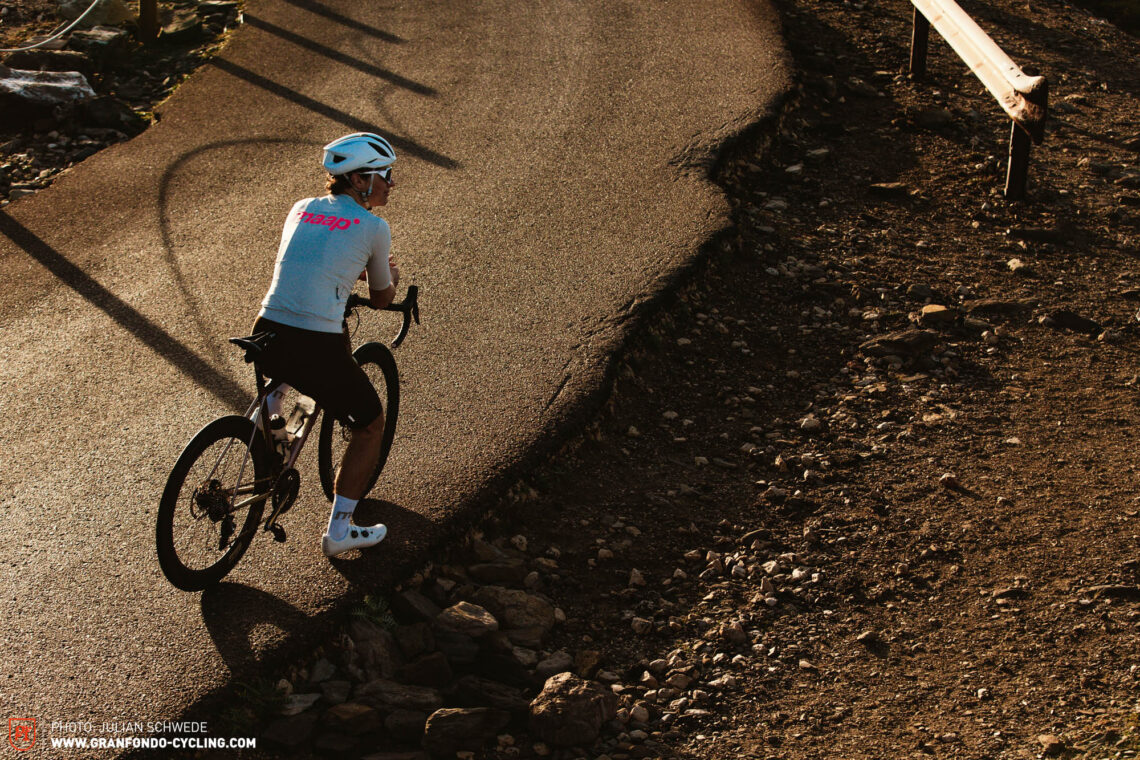
Dropper posts on road bikes are something for bike-cave tinkerers and free spirits who enjoy tuning their bikes to suit their needs and preferences, and those who want to squeeze every last drop of performance out of their bike while trying to shave off precious seconds. As a design alternative to the aero monotony, however, the concept deserves to be developed in more depth. Wireless integration into an existing drivetrain would be a step towards making the dropper post accessible to non-professionals. By the way, Mohorič competed with a dropper post again at the Milan-San Remo in 2023 and finished eighth.
Did you enjoy this article? If so, we would be stoked if you decide to support us with a monthly contribution. By becoming a supporter of GRAN FONDO, you will help secure a sustainable future for high-quality cycling journalism. Click here to learn more.
Words: Nils Hofmeister Photos: Julian Schwede, Sprint Cycling Agency, MERIDA Europe







